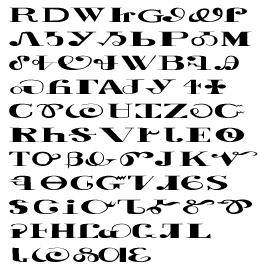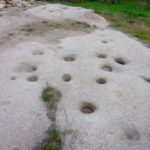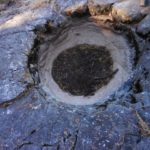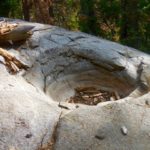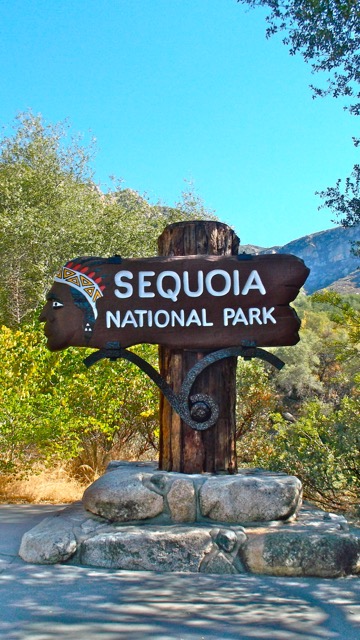
Sequoia National Park was created in 1890, named for the tree that it was created to preserve. The end.Or is it?
By Sarah Elliott, 20 July 2020, 3RNews
Sequoia National Park’s namesake is the Sequoiadendron giganteum, known to us laypeople as the giant sequoia, the most massive tree on the planet. But history may not be correct in how the “sequoia” received its name.
The sequence of Sequoia
The species of redwood that today bears the botanical name Sequoiadendron giganteum was identified by Stephan Endlicher (1804-1849), an Austrian botanist who died by suicide at the age of 44. It has been widely written, even by Sequoia National Park representatives, that Endlicher named the largest tree on the planet for Sequoyah (1770-1843) of the Cherokee Nation who created a syllabary of 86 characters that provided thousands of Cherokees the opportunity to read and write.
There is research that debunks this theory, stating that the European scientist never wrote down that he was honoring Sequoyah with the name Sequoia and there is no record of him speaking of this. In the words of one scientist who has written extensively on giant sequoias, it is contended that:
The Latin word that Endlicher chose to derive the prefix of the name for the coast redwood that established what Lowe (2012) called Endlicher’s sequence of five genera in his Suborder Cunninghamieae is indeed appropriate: ‘I follow, i.e. sequor.’ Since in the verb ‘sequor’ the ‘passive r … was added immediately to the root of the verb,’ then dropping the added ‘r,’ leaves the root verb ‘sequo’ to which is added the Latin suffix ‘ia’ used in the naming of plants, yielding the new word Sequoia as the name for the plant. The Latin suffix ‘ia’ means something derived from, relating to, or belonging to what is conveyed in the prefix. The question then arises: Was Endlicher aware of this specific Latin grammatical nuance in order to derive his prefix? Yes. …” (from the book DEBUNKING THE SEQUOIA honoring SEQUOYAH MYTH, by Gary D. Lowe, 2018).
Sequoyah is remembered kindly by history, and his accomplishments have been honored. Oklahoma gave a statue of Sequoyah to the National Statuary Hall Collection in 1917. Sequoyah’s cabin in Oklahoma, where he lived from 1829 to 1844, is a National Historic Landmark. The United States Postal Service issued a stamp in his honor in 1980. However, as scholars and scientists delve deeper, it’s unlikely that Sequoyah is the namesake of the giant sequoia and, thus, Sequoia National Park.
Here is another citation:
In 1847 Endlicher, a German [sic] botanist, believing that [the tree] was a distinct genus, published it under the name of Sequoia. [Endlicher], contrary to custom, omitted to give the origin of his name, and botanists have conjectured that it was intended to commemorate ‘Sequoyah,’ a … Cherokee Indian, who, all by himself, invented an alphabet and taught it to his tribe by writing it upon leaves. … It seemed fitting that the redwood should be named for the red man, yet Prof. J. G. Lemmon and others consider it to have been derived from sequor (to follow) alluding to the fact that our redwoods are the followers of a vanishing prodigious race, which Prof. Lemmon considers a much more appropriate and pleasing origin for the botanical name of our monster tree.” —George Morris Homans, California State Forester, 1910-1921 (italic added to highlight the cultural racism)
And finally:
… No one has ever found mention in [Endlicher’s] writings of Sequoyah’s name or of his unique Cherokee syllabary. It was apparently assumed that Endlicher, a known philologist, admired the Indian for his linguistic accomplishments. The assumption became widespread, and some botanists, such as Asa Gray, searched the Endlicher papers for confirmation, but in vain. French botanist de Candole agreed with Gray that ‘the supposed origin of Sequoia from Sequoyah is entirely fanciful.’ —The Giant Sequoia of the Sierra Nevada, by R.J. Hartesveldt, H.T. Harvey, H.S. Shellhammer, and R.E. Stecker (1975)
[Article continues below. Click on the images for a slideshow.]
All that’s left today are their markings of millennia in stone…
Native people and Sequoia’s place names
Sequoia National Park set aside wilderness to preserve in perpetuity. This sounds good in theory (if you’re a white person), but the legislation took away yet more ancestral lands from the Native peoples. At that time, a scattering of Indigenous tribes was still living in the region that would become United States’s second national park before the end of the 19th century.
The irony of the national parks, and Sequoia in particular, is that these lands didn’t need protection until the white settlers arrived. They mined the mountains, their stock grazed the meadows, they cut the sequoias, and they displaced the Indigenous caretakers who coexisted with the land and respected the natural world.
By the end of the 19th century, the Native peoples who didn’t assimilate into white society were soon extinct. All that’s left today are their markings of millennia in stone: bedrock mortars scattered along the waterways, the mysterious bathtub-like basins in the sequoia groves, and some pictographs telling an undecipherable story of human occupation.
Contemporary tributes are few to the Native population that called the Sequoia region home for so many generations. There’s the carved “Indian head” sign at the entrance to the park. There are two place names along the highway named for tribes: Potwisha Campground (a Native village site) and Wuksachi Village (named in the 1990s).
Of the ancient Big Trees, dozens of which have commemorative names, only one tree in Sequoia National Park was named for an Indigenous person: Chief Sequoyah Tree. In contrast, there are twice as many trees — two — named for Black Americans: Colonel Charles Young and Booker T. Washington. The rest of the named trees mostly pay tribute to colonizers.
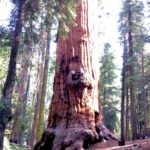
The Chief Sequoyah Tree is a deserving tribute to an accomplished man who was greatly admired by the Cherokee people and others, but (1) Sequoyah is most likely not the namesake for the giant sequoia or Sequoia National Park, and (2) Sequoyah was not a chief. His maternal grandfather was a chief, but Sequoyah never held that distinction.
There is the Suwanee Grove of giant sequoias, which is a name derived from a native language. “Suwanee” is a projectile tool made by Native inhabitants of the eastern part of the country but the grove could also be named for a town in Georgia. Or Kentucky.

Hospital Rock provides visitors with the most visual replica of Indigenous occupation. There was a Native village here and there are prehistoric pictographs and bedrock mortars in the vicinity.
The Kaweah River is derived from the Native language. According to James Barton (1819-1912) of Three Rivers (the author’s great-great-grandfather): “Kaweah is formed from two words… Kawa is the Wutchumna word for crow. Aweah means ‘water’ in the same language. The combination of the two means crow-water and people got to pronouncing it wrong and it now has the name Kaweah.”

